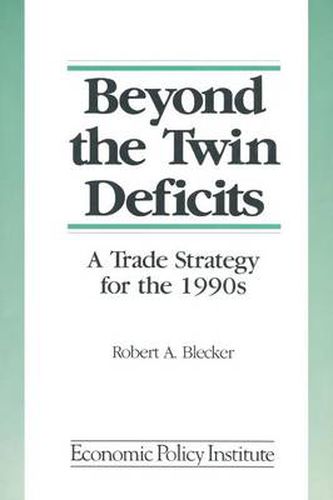Readings Newsletter
Become a Readings Member to make your shopping experience even easier.
Sign in or sign up for free!
You’re not far away from qualifying for FREE standard shipping within Australia
You’ve qualified for FREE standard shipping within Australia
The cart is loading…






This study documents evidence of a decline trend in the international competitiveness of US industry. The analysis identifies three groups of countries that account for most of the US trade deficit in the 1980s: the surplus countries, Germany and Japan; the East Asian NICs; and the Latin American debtors. In each case the author points to underlying structural problems contributing to the deficit. They call for quite different US policy responses, including microeconomic and industrial policies, incentives to revive productivity, growth and technological innovation, import surcharges, wage increases in the NICs, currency realignments, US capital exports, and debt relief. A pragmatic policy approach, with efforts to open foreign markets, aims to achieve the greatest possible reduction in the trade deficit with the lowest possible cost from macroeconomic adjustments. The author urges the reversal of two adverse trends in his policy strategy: the decline in public sector investment and the decreasing progressivity of the tax code.
$9.00 standard shipping within Australia
FREE standard shipping within Australia for orders over $100.00
Express & International shipping calculated at checkout
This study documents evidence of a decline trend in the international competitiveness of US industry. The analysis identifies three groups of countries that account for most of the US trade deficit in the 1980s: the surplus countries, Germany and Japan; the East Asian NICs; and the Latin American debtors. In each case the author points to underlying structural problems contributing to the deficit. They call for quite different US policy responses, including microeconomic and industrial policies, incentives to revive productivity, growth and technological innovation, import surcharges, wage increases in the NICs, currency realignments, US capital exports, and debt relief. A pragmatic policy approach, with efforts to open foreign markets, aims to achieve the greatest possible reduction in the trade deficit with the lowest possible cost from macroeconomic adjustments. The author urges the reversal of two adverse trends in his policy strategy: the decline in public sector investment and the decreasing progressivity of the tax code.